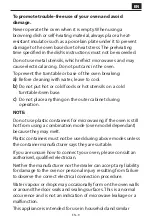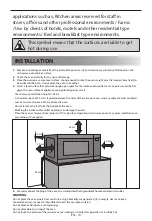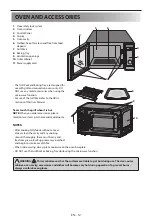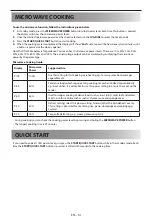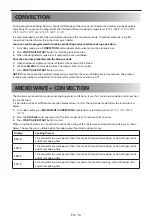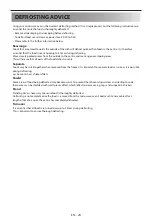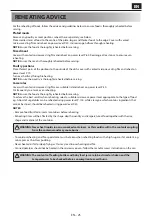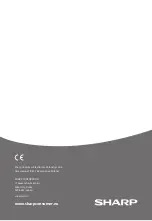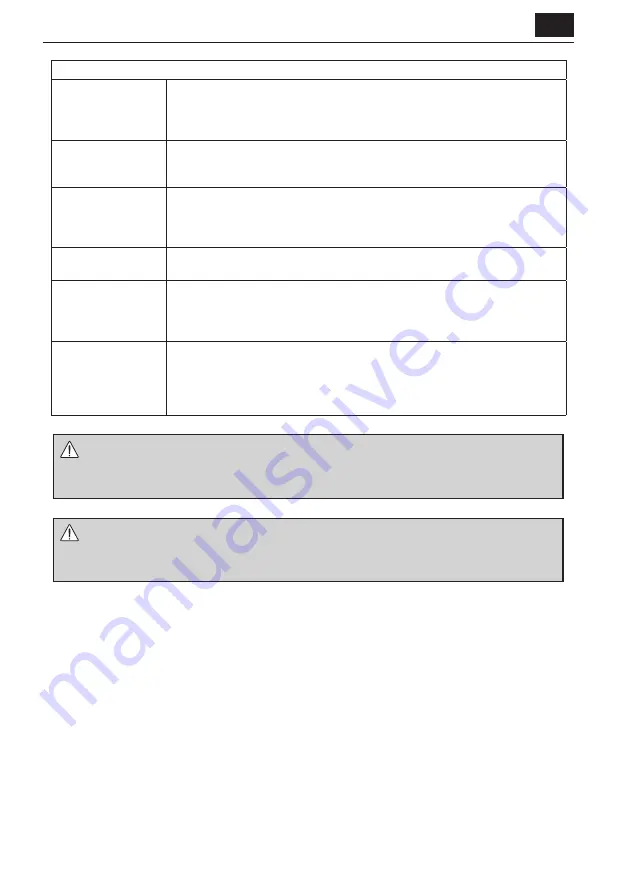
EN
EN – 22
EN – 22
MICROWAVE COOKING ADVICE
Microwaves cook food faster than conventional cooking. It is therefore essential that certain techniques are followed
to ensure good results. Many of the following techniques are similar to those used in conventional cooking.
WARNING: Liquids and foods must not be heated in sealed containers or jars/containers with lids on, as
pressure will build up inside and may cause the jar/container to explode.
COOKING ADVICE NOTES:
• Always attend the oven when in use.
• Ensure that the utensils are suitable for use in a microwave oven.
• Only use microwave popcorn within the recommended packaging (follow the manufacturers instructions). Never
use oil unless specifi ed by the manufacturer and never cook for longer than instructed.
WARNING: If you exceed recommended cooking times and use power levels that are too high, food
may overheat, burn and, in extreme circumstances, catch fi re and damage the oven.
Arrange
Place the thickest parts of food towards the outside of the dish. e.g. Chicken drumsticks.
Foods that are placed towards the outside of the dish will receive more energy, so cook quicker, than those in the
centre.
Cover
Certain foods benefi t from being covered during microwave cooking.
Use vented microwave cling fi lm or a suitable lid.
Pierce
Foods with a shell, skin or membrane must be pierced in several places before cooking or reheating as steam will build
up and may cause food to explode. e.g. Potatoes, Fish, Chicken, Sausages.
NOTE: Eggs should not be heated using microwave power as they may explode, even after cooking has ended. e.g.
poached, fried, hard boiled.
Stir, turn and rearrange
For even cooking it is essential to stir, turn and rearrange food during cooking. Always stir and rearrange from the
outside towards the centre.
Stand
Standing time is necessary after cooking so it enables the heat to disperse equally throughout the food.
EN – 23
EN – 23
Food Characteristics
Composition
Foods high in fat or sugar (e.g. Christmas pudding, mince pies) require less heating time.
Care should be taken as overheating can lead to fi re.
Bones in food conduct heat, making the food cook more quickly. Care must be taken so
that the food is cooked evenly.
Density
Food density will aff ect the amount of cooking time needed.
Light porous foods, such as cakes or bread, cook more quickly than heavy, dense foods,
such as roasts and casseroles.
Quantity
The number of microwaves in your oven remains the same regardless of how much food
is being cooked. The cooking time must be increased as the amount of food placed in
the oven increases.
e.g. Four potatoes will take longer to cook than two.
Size
Small foods and small pieces cook faster than large ones, as microwaves can penetrate
from all sides to the centre. For even cooking make all the pieces the same size.
Shape
Foods which are irregular in shape, such as chicken breasts or drumsticks, take longer to
cook in the thicker parts. For even cooking, place the thickest parts to the outside of the
dish where they will receive more energy.
Round shapes cook more evenly than square shapes when microwave cooking.
Temperature of food
The initial temperature of food aff ects the amount of cooking time needed.
Chilled foods will take longer to cook than food at room temperature.
The temperature of the container is not a true indication of the temperature of the food
or drink. Cut into foods with fi llings, for example jam doughnuts, to release heat or
steam.
WARNING: Face and Hands: Always use oven gloves to remove food or cookware from the oven. Stand
back when opening the oven door to allow heat or steam to disperse. When removing
covers (such as cling fi lm), opening roasting bags or popcorn packaging, direct steam away
from face and hands.
WARNING: Check the temperature of food and drink, stir before serving. Take special care when
serving to babies, children or the elderly. The contents of feeding bottles and baby food
jars are to be stirred or shaken and the temperature is to be checked before consumption
to avoid burns.
Summary of Contents for YC-QC254A
Page 30: ...EN 28 EN 28 ...
Page 31: ......

